Winning the battle of the gain line
Defenceby Clive Griffiths
Pressurise opposition attacks by using good defensive shape and line speed.
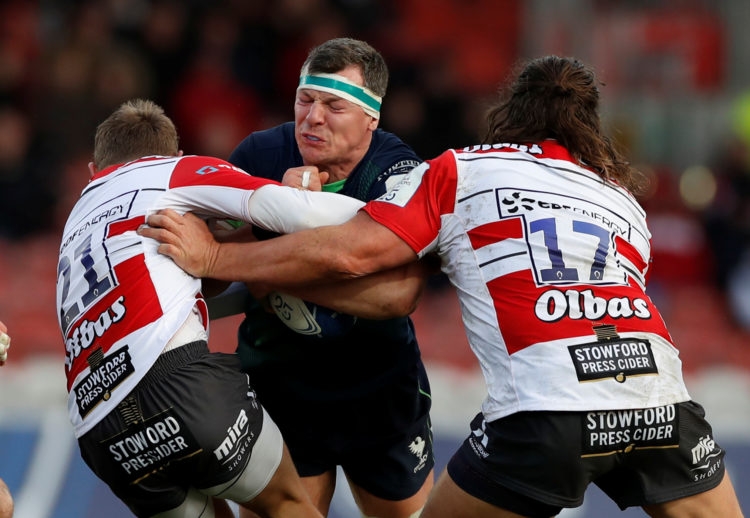
Defence and defensive systems have become an extra feature of rugby union since the advent of professionalism. There is no doubt rugby league has had an influence on this aspect of the game.
Bob Dwyer, former Australian coach, quite openly admits he tapped into the Australian rugby league whilst coaching in the Northern Hemisphere. Many of the top club and international sides have employed former rugby league players and coaches as their defensive staff. England employed Mike Ford and previously Phil Larder, Wales had, until recently Shaun Edward and before that yours truly, France has Dave Ellis and Scotland Graham Steadman.
We can see how many rugby league systems are now being replicated by rugby union teams. Teams with the best defensive line structure and speed, with good intensity and technique at the collision, will win the battle of the gain line.
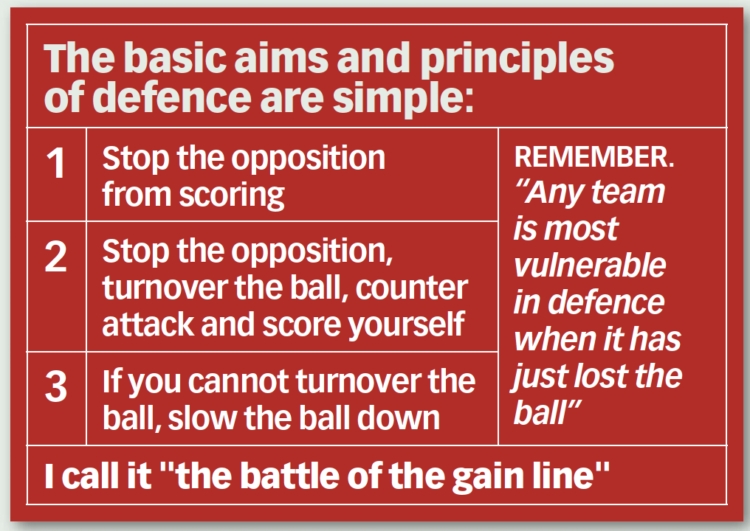
Another aspect of rugby league which is now a feature of rugby union is the influence of the one on one hit. Players are now far more aggressive and competent in the tackle area in rugby union.
More training time is now spent on tackle technique. Players now concentrate on the techniques of the tackle – from footwork to grip and shoulder contact.
It used to be that teams just paid lip service to technique and tactical awareness. Defence coaches also do more on defensive shape. The team that can retain its shape and reload back into position when play is broken up will be difficult to break down and will pressurise opposition attackers and play makers into making mistakes.

So we coach players to make an impact at the tackle or at worst slow the ball down. If we can slow the ball down, our players can get back into that shape.
When the tackle occurs, players must "fold" around the tackle area and into position to stop the next attack.
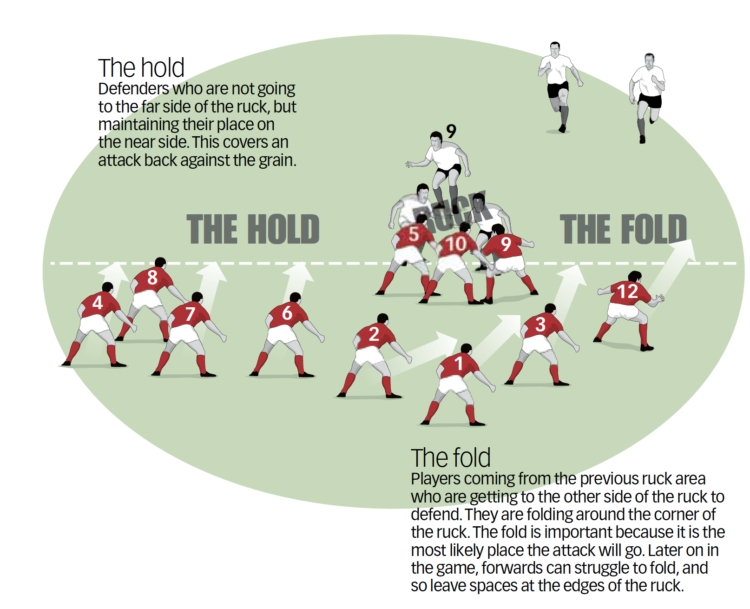
At the same time, they need to maintain a strong position on the short side. In training, we work on "the fold", with players folding around the breakdown to get into position to meet the opposition's attacking flow.
With more specialist defence coaches comes more work timetabled into training to focus on all these aspects. They will be pressurising the head coach for time within sessions (I can second that!).
Professional teams obviously have far more time to include this during the week. Players are also spending more time away from formal training, working on their tackle 'extras'. These are areas of the game which they feel require more attention such as, vision, footwork and agility prior to contact, reaction time with secure technique on both shoulders.
Players must also understand that there is a psychological element to tackling. A tackle is a chance to attack someone physically! There is nowhere to hide. Fly halves are making more tackles than ever before!
Tackle technique: for instance, footwork, grip, shoulder control, vision.
Defensive shape: getting into position, reloading quickly at each phase, pressurising the attack.
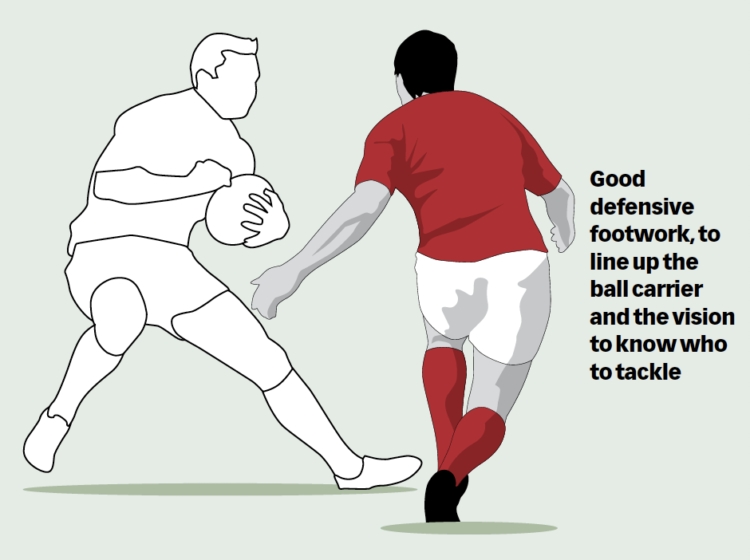
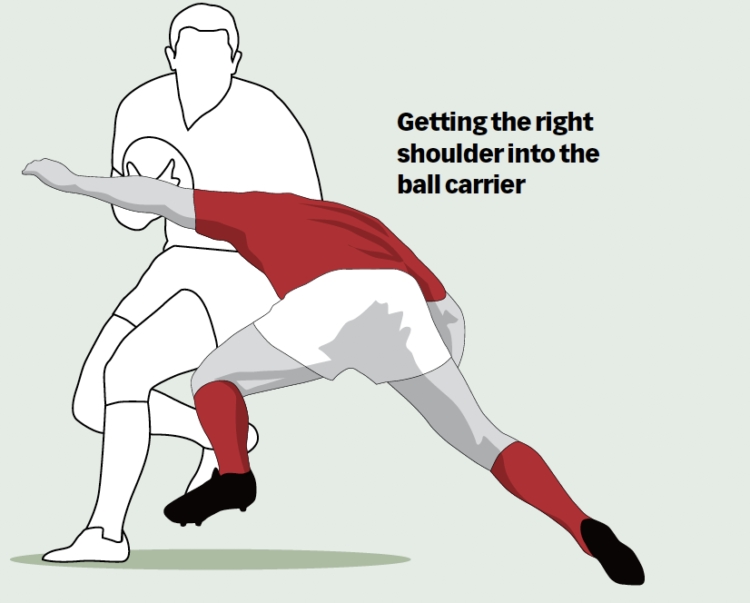
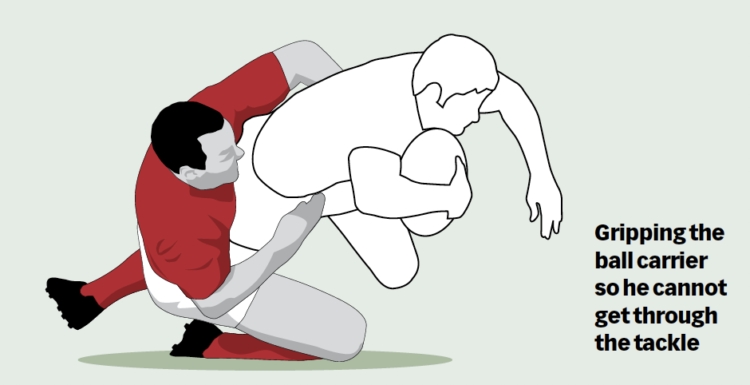
A typical defence session builds on individual and team elements:

Defence and defensive systems have become an extra feature of rugby union since the advent of professionalism. There is no doubt rugby league has had an influence on this aspect of the game.
Bob Dwyer, former Australian coach, quite openly admits he tapped into the Australian rugby league whilst coaching in the Northern Hemisphere. Many of the top club and international sides have employed former rugby league players and coaches as their defensive staff. England employed Mike Ford and previously Phil Larder, Wales had, until recently Shaun Edward and before that yours truly, France has Dave Ellis and Scotland Graham Steadman.
We can see how many rugby league systems are now being replicated by rugby union teams. Teams with the best defensive line structure and speed, with good intensity and technique at the collision, will win the battle of the gain line.

Another aspect of rugby league which is now a feature of rugby union is the influence of the one on one hit. Players are now far more aggressive and competent in the tackle area in rugby union.
ADVANCE OF DEFENCE COACHING
More training time is now spent on tackle technique. Players now concentrate on the techniques of the tackle – from footwork to grip and shoulder contact.
It used to be that teams just paid lip service to technique and tactical awareness. Defence coaches also do more on defensive shape. The team that can retain its shape and reload back into position when play is broken up will be difficult to break down and will pressurise opposition attackers and play makers into making mistakes.

So we coach players to make an impact at the tackle or at worst slow the ball down. If we can slow the ball down, our players can get back into that shape.
GETTING INTO SHAPE
When the tackle occurs, players must "fold" around the tackle area and into position to stop the next attack.

At the same time, they need to maintain a strong position on the short side. In training, we work on "the fold", with players folding around the breakdown to get into position to meet the opposition's attacking flow.
With more specialist defence coaches comes more work timetabled into training to focus on all these aspects. They will be pressurising the head coach for time within sessions (I can second that!).
Professional teams obviously have far more time to include this during the week. Players are also spending more time away from formal training, working on their tackle 'extras'. These are areas of the game which they feel require more attention such as, vision, footwork and agility prior to contact, reaction time with secure technique on both shoulders.
Players must also understand that there is a psychological element to tackling. A tackle is a chance to attack someone physically! There is nowhere to hide. Fly halves are making more tackles than ever before!
WHAT DO DEFENCE COACHES WORK ON
Tackle technique: for instance, footwork, grip, shoulder control, vision.
Defensive shape: getting into position, reloading quickly at each phase, pressurising the attack.



SKILLS SESSIONS
A typical defence session builds on individual and team elements:
- We will work on ‘shadow’ skills and ‘mapping’. Here defenders work on their line discipline, systems and footwork to be in the right position to make tackles.
- There will be an element of tackle technique, concentrating on a specific part of the tackle like head position or foot position before contact.
- Defensive systems will concentrate on line speed exercises. We want the players to move up fast, in a cohesive line.
- We make the players think about the consequences of different distances between the tackle line and gain line.
- We like to dovetail skill sessions into games.
- If we are working on an up and out (drift) system, then we can overload the attack, say 7 on 4. For an up and in (blitz) system we may overload the defence.
- We might finish with a 12 v 12 game where the balance between both systems can be explored.
Newsletter Sign Up
Coaches Testimonials

Gerald Kearney, Downtown Las Vegas Soccer Club

Paul Butler, Florida, USA

Rick Shields, Springboro, USA

Tony Green, Pierrefonds Titans, Quebec, Canada
Subscribe Today
Be a more effective, more successful rugby coach
In a recent survey 89% of subscribers said Rugby Coach Weekly makes them more confident, 91% said Rugby Coach Weekly makes them a more effective coach and 93% said Rugby Coach Weekly makes them more inspired.
Get Weekly Inspiration
All the latest techniques and approaches
Rugby Coach Weekly offers proven and easy to use rugby drills, coaching sessions, practice plans, small-sided games, warm-ups, training tips and advice.
We've been at the cutting edge of rugby coaching since we launched in 2005, creating resources for the grassroots youth coach, following best practice from around the world and insights from the professional game.












